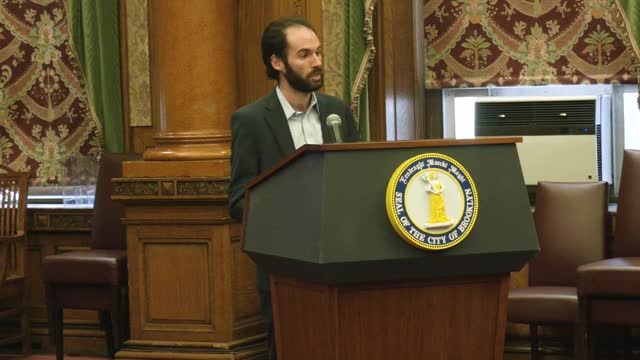New York City tackles housing crisis with bold zoning reforms
May 07, 2024 | Kings County - Brooklyn Borough, New York

This article was created by AI summarizing key points discussed. AI makes mistakes, so for full details and context, please refer to the video of the full meeting. Please report any errors so we can fix them. Report an error »

In a recent government meeting, officials discussed the pressing housing crisis in New York City, highlighting the need for zoning reforms to facilitate increased housing production. The current vacancy rate for rental apartments stands at a historically low 1.4%, with Brooklyn even lower at 1.27%. This scarcity has resulted in over half of New Yorkers being rent burdened, spending more than 30% of their income on housing, and has exacerbated the homelessness crisis, with over 92,000 individuals, including 33,000 children, relying on shelters each night.
The meeting underscored that the city’s housing supply has not kept pace with demand, primarily due to restrictive zoning laws established in 1961. Officials noted that most housing in the city was built in the first half of the 20th century, and recent production has been concentrated in only a few neighborhoods. In 2023, just 10 community districts accounted for as much housing production as the remaining 49 combined.
To address these challenges, the city is proposing a new initiative, \"City of Yes for Housing Opportunity,\" which aims to promote incremental housing growth across all neighborhoods. This initiative is rooted in the \"Where We Live NYC\" fair housing plan, developed in collaboration with over 250 community organizations. The goal is to create a more equitable distribution of housing opportunities, alleviating pressure on neighborhoods that have seen significant growth.
The meeting also highlighted the broader economic implications of the housing crisis. High housing costs limit residents' disposable income, affecting their ability to spend on other necessities and contributing to economic stagnation. Additionally, increasing housing production could generate substantial economic benefits, potentially adding $58.2 billion to the city’s economy and creating over 260,000 jobs in construction and maintenance.
Officials emphasized the human impact of the housing shortage, sharing stories from community engagement efforts that reveal the struggles of residents facing long commutes, overcrowding, and displacement. The proposed zoning changes aim to empower communities and provide more housing options, ultimately striving to improve the quality of life for all New Yorkers.
The meeting underscored that the city’s housing supply has not kept pace with demand, primarily due to restrictive zoning laws established in 1961. Officials noted that most housing in the city was built in the first half of the 20th century, and recent production has been concentrated in only a few neighborhoods. In 2023, just 10 community districts accounted for as much housing production as the remaining 49 combined.
To address these challenges, the city is proposing a new initiative, \"City of Yes for Housing Opportunity,\" which aims to promote incremental housing growth across all neighborhoods. This initiative is rooted in the \"Where We Live NYC\" fair housing plan, developed in collaboration with over 250 community organizations. The goal is to create a more equitable distribution of housing opportunities, alleviating pressure on neighborhoods that have seen significant growth.
The meeting also highlighted the broader economic implications of the housing crisis. High housing costs limit residents' disposable income, affecting their ability to spend on other necessities and contributing to economic stagnation. Additionally, increasing housing production could generate substantial economic benefits, potentially adding $58.2 billion to the city’s economy and creating over 260,000 jobs in construction and maintenance.
Officials emphasized the human impact of the housing shortage, sharing stories from community engagement efforts that reveal the struggles of residents facing long commutes, overcrowding, and displacement. The proposed zoning changes aim to empower communities and provide more housing options, ultimately striving to improve the quality of life for all New Yorkers.
View full meeting
This article is based on a recent meeting—watch the full video and explore the complete transcript for deeper insights into the discussion.
View full meeting
